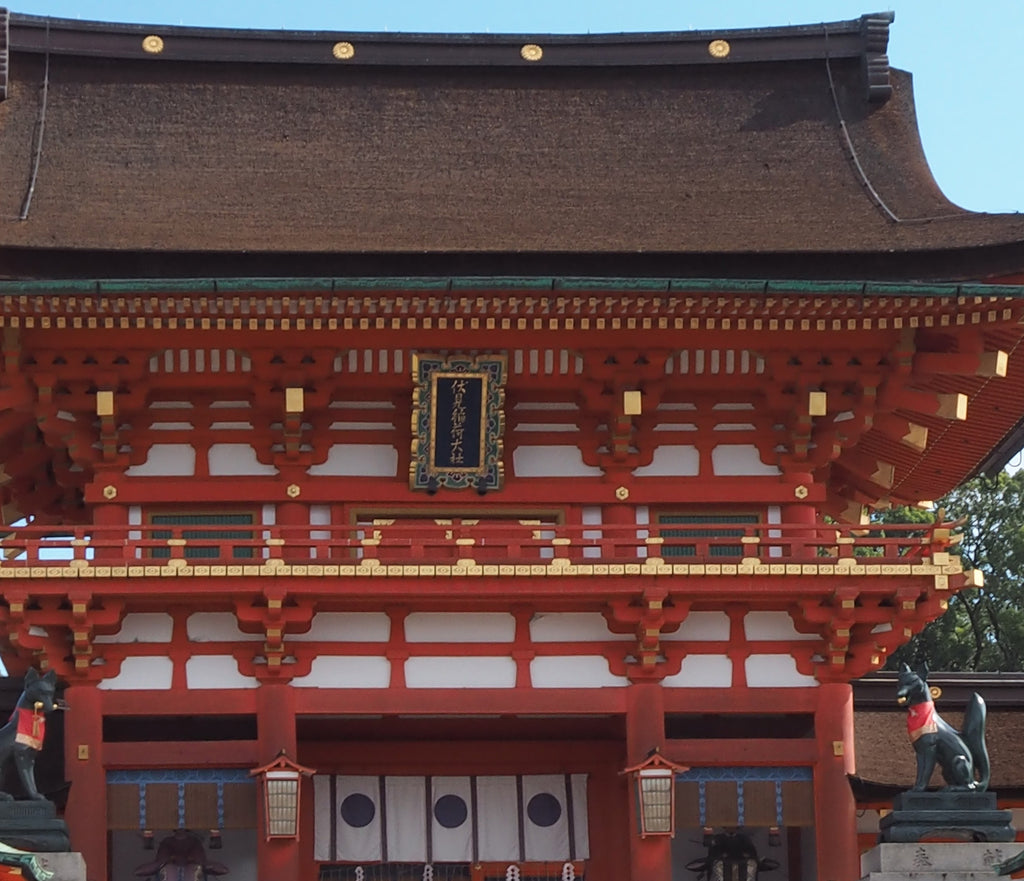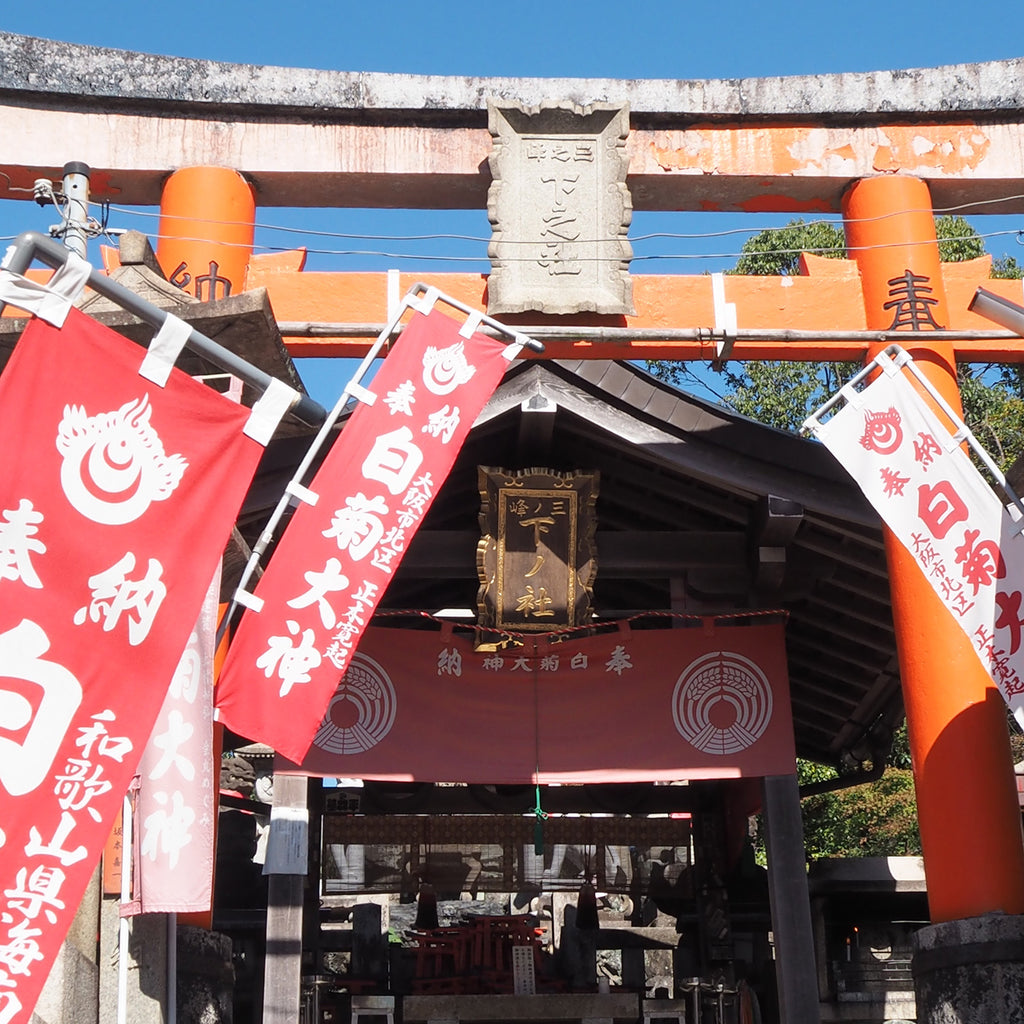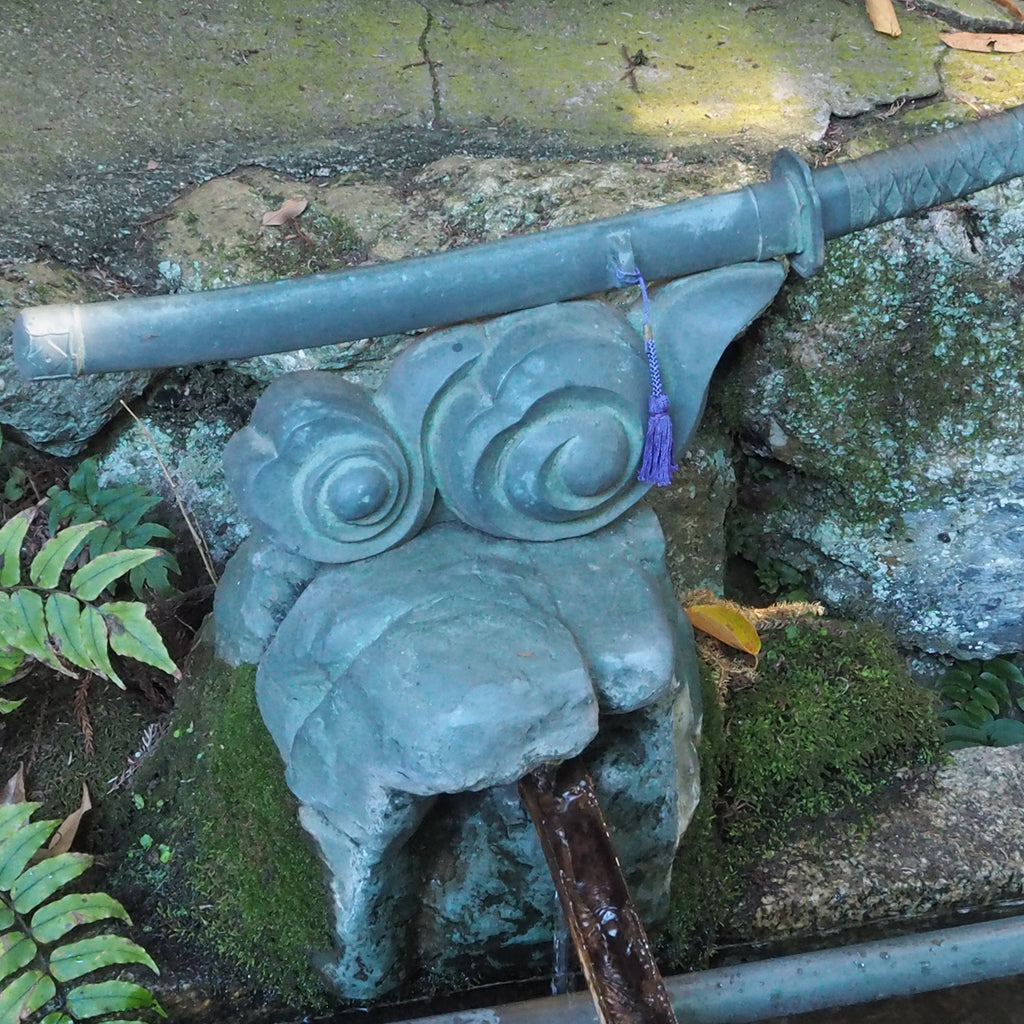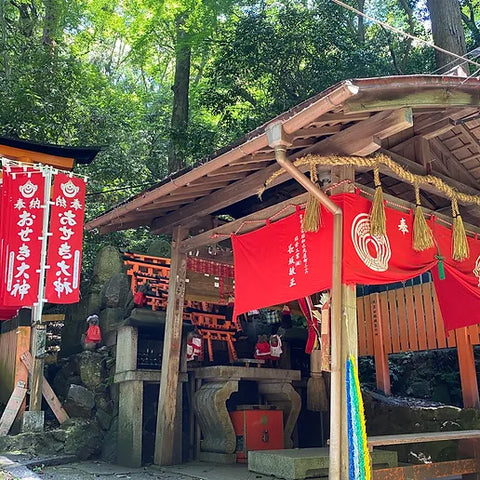When you visit Fushimi Inari Taisha Shrine, why not enjoy a tour of the Inari-san mountain beyond the Senbon-torii gate?
It takes about one hour to reach Ichinomine, the summit of the mountain, and from Yotsutsuji Street on the way, you can enjoy a break at a cafe while enjoying the view of the city of Kyoto.
Fushimi Inari Taisha Shrine has recently become a popular spot for tourists from overseas. Compared to the lively foothill area, the flow of people around the top of Mt. Inari is a little calmer, and you can fully enjoy a tour of the mountain in the fresh air.
This course is also recommended for hiking beginners, as relatively light clothing can be worn.
<Hike route>
Time: about 3 hours
Distance: about 6km
- 【1】JR Inari Station
- 3 min
- 【2】Fushimi Inari Shrine(Main Shrine)
- 8 min
- 【3】Omokaru Ishi
- 15 min
- 【4】Mitsutsuji Street
- 10 min
- 【5】Yotsutsuji Street
- 8 min
- 【6】San-no-mine(Shimo-no-sha Shrine)
- 5 min
- 【7】Ni-no-mine(Naka-no-sha Shrine)
- 5 min
- 【8】Ichi-no-mine(Kami-no-sha Shrine)
- 10 min
- 【9】Mitsurugi-sha Shrine
- 7 min
- 【10】Yakuriki-sha Shrine
- 8 min
- 【11】Ganriki-sha Shrine
- 7 min
- 【5】Yotsutsuji Street
- 10 min
- 【4】 Mitsutsuji Street
- 15 min
- 【12】朱 SHU.by Vermillion
- 7 min
- 【13】Keihan Fushimi-Inari Station
- GOAL!!

【1】JR Inari Statio
Although a small station, it has been crowded with many tourists in recent years.
A powerful torii gate welcomes you directly outside the station.

【2】 Fushimi Taisha Shrine (Main Shrine)
This is the main head shrine of the Inari shrines scattered throughout Japan. The head shrine buildings are designated as National Important Cultural Properties.

After praying at the main shrine, go to the back and you will see a group of vermilion-lacquered torii gates.
These are the impressive Senbon-torii (1,000 torii gates). The endless vermilion tunnel seems to lead you to another world.

【3】Omokaru Ishi (stone)
This stone is located at the right end of the Okusha Shrine, which is reached by passing through the torii gates. If you lift it up and it is light, your wish will come true!
To be honest, it is quite heavy! It is fun to try your luck.

The path from Omokaru Ishi to Mitsutsuji is mysterious.
The candlelight that burns continuously at Kumataka Shrine along the way creates a solemn atmosphere.

There is a mysterious legend about the Shin-ike Pond, also known as Kodama-ga-ike, located just behind the Kumataka-sha Shrine.
If you clap your hands toward the pond and the echo Kodama returns early, your wish will come true sooner.
【4】Mitsutsuji Street
We finally made it! If you just walk, it takes about 20 minutes from the main shrine. If you take various side trips, it will take more than 30 minutes.
As the name suggests, the path divides into three sections, so please proceed to the east (in the direction of the Gozan approach) to reach the goal at the top.

On the way to the top is a mound in the shape of a gourd.
It is said to bring good luck and to be the god of sake.
【5】Yotsutsuji Street
A five-minute walk from Mitsutsuji Street brings you to a rest spot where you can enjoy a panoramic view of the Kyoto cityscape.

From here, the tour around the mountain can be done either clockwise or counterclockwise. The original route is counterclockwise, but clockwise is recommended because the latter half of the tour is easier.This time, we will guide you in a clockwise (half-clockwise) direction.
Even in the cooler months, you will work up a good sweat.
There is a sweet shop where you can have a meal, and it is nice to take a breather with tea and sweets.

From here, the tour around the mountain can be done either clockwise or counterclockwise. The original route is counterclockwise, but clockwise is recommended because the latter half of the tour is easier.
This time, we will guide you in a clockwise (half-clockwise) direction.
【6】San-no-mine (Shimo-no-sha Shrine)
Passing south on the road next to Nishimura-tei at Yotsutsuji, climb the stairs preceding Senbon-torii to arrive at the shrine.
Shirakiku Daijin is enshrined here.
A valuable triangular-rimmed mirror was unearthed here.
Triangular-rimmed mirrors were used in rituals and valued as symbols of authority during the Kofun period (3rd to 7th centuries).
They were often unearthed from burial mounds as secondary burial objects, indicating that Mt. Inari was likely to have been a place of rituals for powerful people from ancient times.

【7】Ni-no-mine (Naka-no-sha Shrine)
Aoki-no-okami, also known as “Sarutahiko-no-okami”, is enshrined here.
The stone pedestal is said to be made of lava from Mt. Fuji. How in the world did they transport it?

【8】Ichi-no-mine (Kami-no-sha Shrine)
We finally reached the summit of the mountain!
The Suehiro-daijin enshrined here is another name for "Inari-daijin”.
It has long been revered as a god of popularity and entertainment and is said to bring blessings for prosperous business.

Fire skewers can be purchased at Suehiroya, in front of Nomine. They can also be purchased at other businesses.
If you write your name or your company’s name and your wish on the skewer, the skewer will be burned on the "O-Hi-Kaki Day" to offer prayers to the gods.
Each shrine has its own O-Hi-Kaki Day.It is fun to consider the advantages and other factors when choosing the shrine you would like to dedicate to the gods.

【9】Mitsurugi-sha Shrine
The path from Ichinomine to Mitsurugi-sha is downhill and a little easier.
In The Pillow Book of the Kamakura period (1185-1333), the author, Sei Shonagon, wrote that he visited the shrine in the original left direction and fell to his knees here because of the uphill slope.
It seems that it was popular to visit Mt. Inari on the first Day of the Horse in February at that time, and it has been a popular spot for 1,000 years. Even today, the first Day of the Horse of early February each year is designated as Hatsuuma (first horse day), and a large Shinto ritual is held at Fushimi Inari Taisha Shrine.
About 10 minutes' walk from Ichinomine, you will come to Mitsurugi-sha. Also known as “Choia Shrine”, it is marked on old maps as Tsurugi-ishi (Thunder Stone). This shrine, too, seems to have been a place of ritual since ancient times.

【10】Yakuriki-sha Shrine
This shrine is dedicated to "Yakuriki Daijin" (Great God of Medicine). As the name implies, the deity is said to be a god that brings blessings for good health.
The nearby Yakuriki Waterfall is a waterfall located at the headwaters of the innermost part of Mt. Inari. It is said that if you drink medicine from this water, which is said to be divine water,its medicinal effects will be enhanced and your illness will be cured.

As the mound guardian of Yakuriki-sha,「the Yakuriki-tei」provides worshippers with food and a place to rest and relax.
Eggs boiled in the shrine water and coffee with an authentic taste are also popular.

Oseki-sha Shrine is located near the Yakuriki Waterfall.
The shrine is dedicated to Oseki-ohjin,the god of coughing cough, the throat, and the voice, and there is a post box where prayers and letters of thanks are delivered from all over the country.
Perhaps because it is the god of the voice, many people in the entertainment industry also visit the shrine.

【11】Ganriki-sha Shrine
It takes about 10 minutes from Yakuriki-sha to Ganriki-sha. Just before the Ganryoku Shrine, there is the Gozendani Bujosho.
The Gozendani Bujosho is the key point where the valleys of the three peaks converge to worship Ichinomine, Ninomine, and Sanomine. If you are interested, please stop by.
Passing the Gozendani Bujosho, we will go to Ganriki-sha (Shrine of Eyes). It has long been believed to be beneficial for recovering from eye diseases and "giving one the power of foresight and eyesight.
On the head of the large fox is a jewel, and water comes out of a tube in its mouth.

A popular souvenir is Ganriki-san no Sho (The Book of Mr. Ganryoku).

After leaving Ganriki-sha, it takes about five minutes to walk back to Yotsutsuji.
Returning from Yotsutsuji to Mitsutsuji, head in the direction of the sign on the front door, which reads "To Gosanjo/Honden” (the main shrine).
On the way, there is "Sanpou no Omokaruishi". You will also notice many things at this Omokaru Ishi stone!

【12】朱 SHU. by Vermillion
After visiting Yotsutsuji and Mitsutsuji, it is about a 10-minute walk from Sanpou no Omokaruseki, and our store is located at the foot of Mt. Inari.
In addition to something nice made in Japan for everyday use, our original goods featuring the torii gate of the Fushimi Inari Taisha Shrine are also popular.

Vermillion's original tenugui cloths are recommended for all-purpose use, such as for wiping sweat, wrapping things, etc.

A minute's walk from 朱 SHU. toward the station is its affiliated espresso coffee shop, Vermillion-cafe.
Why not take your time to relax and reset your hiking fatigue with brunch and sweets while enjoying the view of Yashima Pond from the terrace seats?

【13】Keihan Fushimi-Inari Station
It takes about 7 minutes on foot from 朱 SHU. by Vermillion to arrive at Fushimi-Inari Station on the Keihan Railway.Please enjoy strolling by the various stores along the way!
Tofukuji Station is 3 minutes from here, and Gion-Shijo Station is 9 minutes away. Very easy access.


